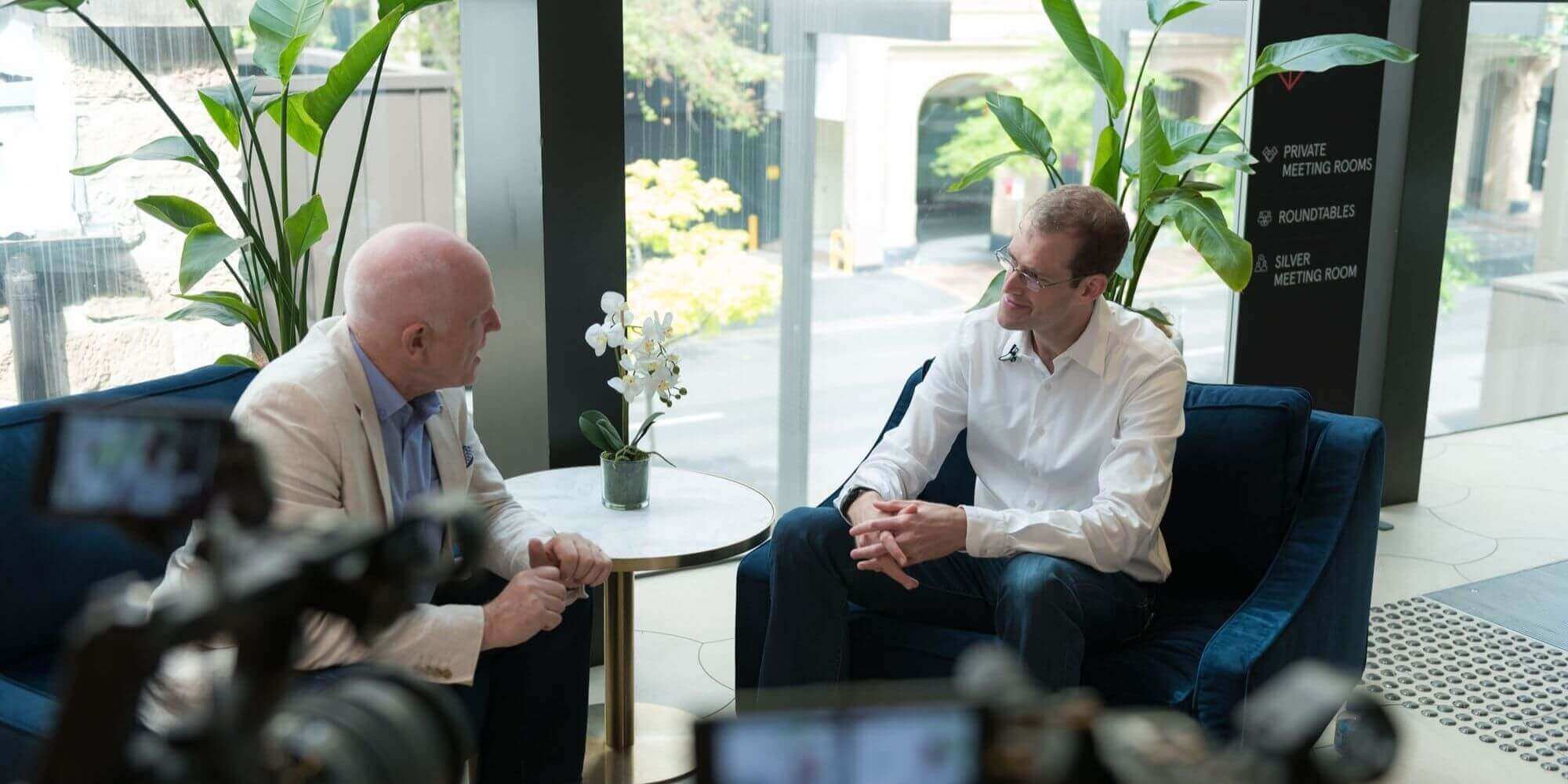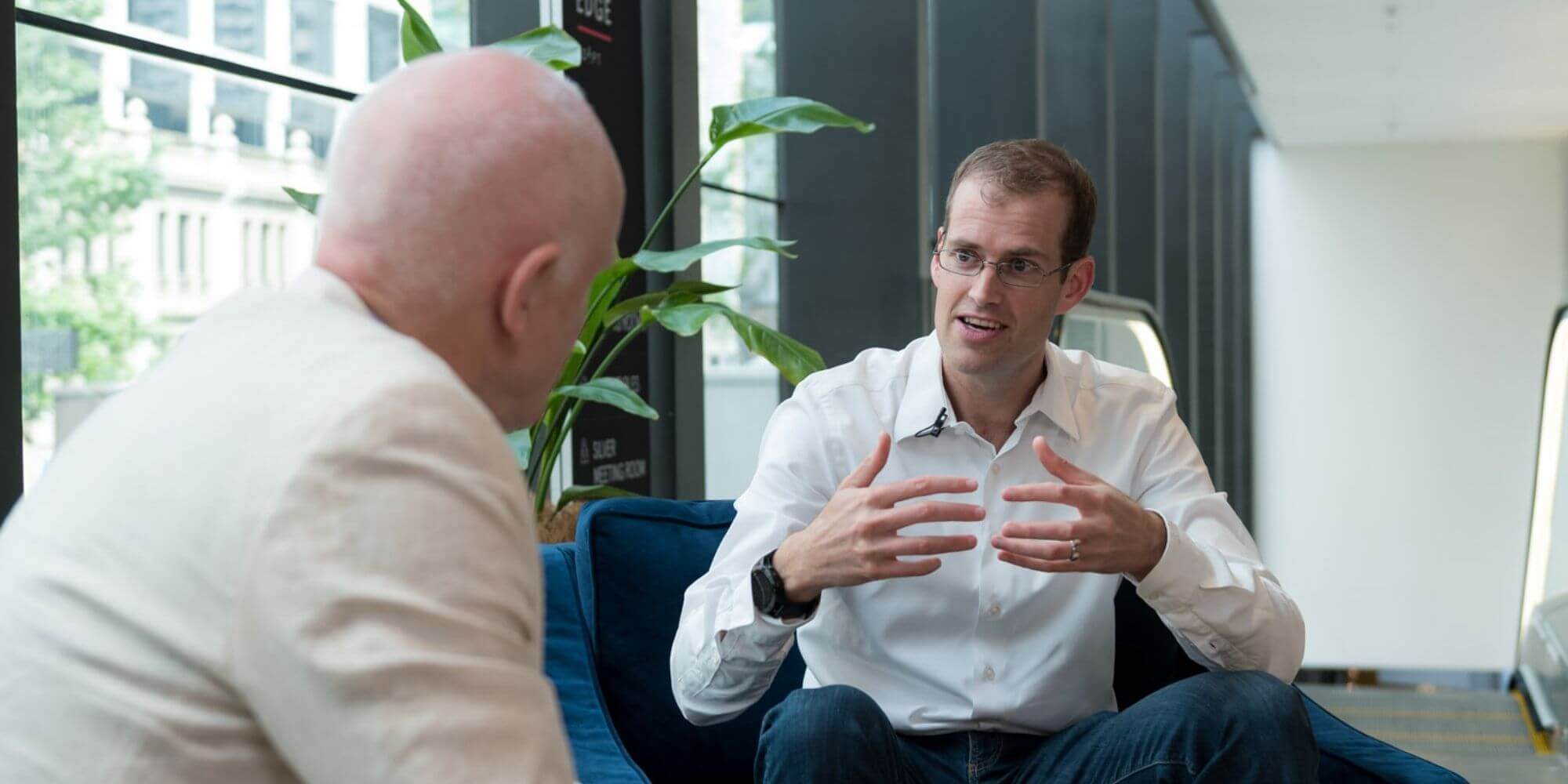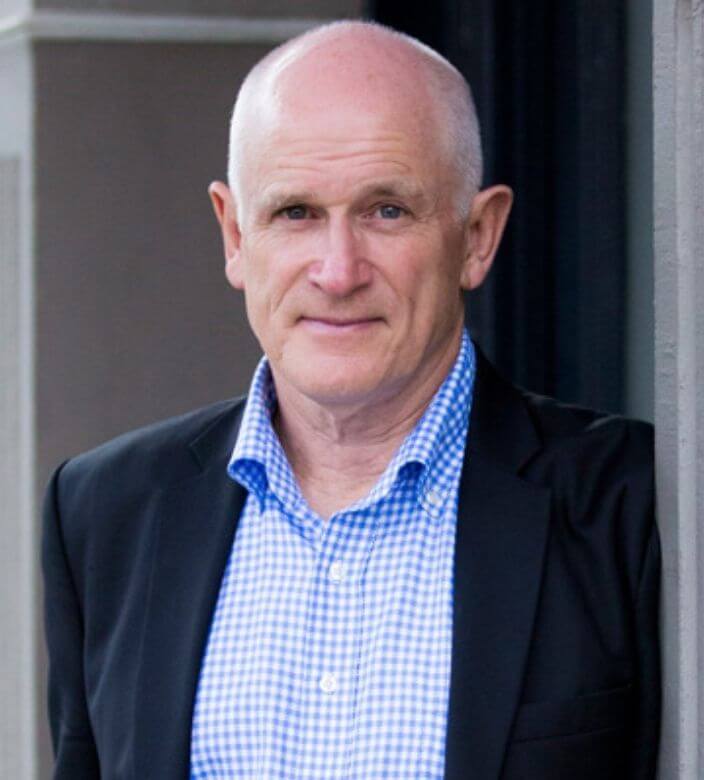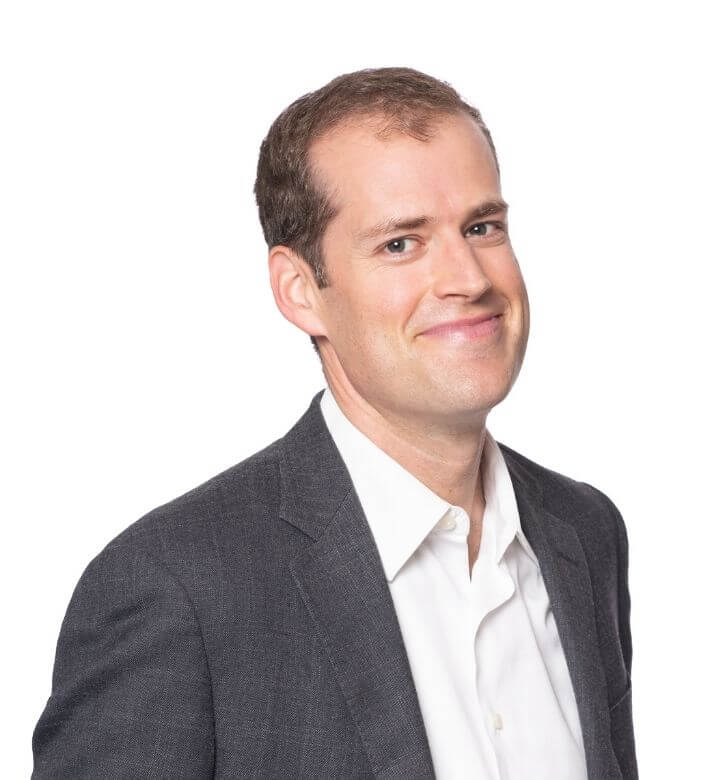McKinsey’s Partner on how COVID-19 accelerated digitisation of decision-making, customer interaction, and business continuity
McKinsey and Co.’s Partner Brant Carson discusses 3 ways COVID-19 has pushed organisations towards digitisation. He outlines how decision-making, customer interaction, and business continuity have been forever transformed.McKinsey and Co.’s Partner Brant Carson discusses 3 ways COVID-19 has pushed organisations towards digitisation. He outlines how decision-making, customer interaction, and business continuity have been forever transformed.
His greatest takeaway from this crisis is the necessity of cloud infrastructure, automation, and high-performing talent. To overcome the stalemate between business and technology, executive leadership must support CIOs to drive digital transformation.
Speaking at ADAPT’s CIO Edge event, Senior Analyst Peter Hind, Brant shares practical ways to create a compelling narrative to excite the organisation about digitally-driven business outcomes and bolstering strong collaboration in departments to achieve this.
Peter Hind:
Brant, one of the fascinating things about talking to somebody from McKinsey is McKinsey has such an extensive research capability, and we live in a fascinating time with COVID and how COVID has been a transformation agent.
But I’ll be interested in finding out what are some of the research findings in relation to technology that you’ve seen?
Brant Carson:
Look, thanks for asking. It’s great to see you as always. The pandemic is a horrific humanitarian crisis. There are no two ways about it.
And you were just talking about how Canada is faring compared to Australia. And it is two different worlds. We’re very lucky to live in Australia.
It’s interesting from a technology perspective, COVID, we’ve seen it with the article that just came out about billionaire fortunes for tech billionaires have gone up 41 percent.
There’s a disproportionate amount of increase in wealth, particularly for tech billionaires, but also tech companies. And why is that?
It’s interesting because when you look at it, what is the pandemic done? It’s made a big push towards digitisation.
So all of a sudden you have to interact with your customers, B2B or B2C, much more online.
You also, because people aren’t working in the office, need to have your internal processes much more digitised. And so companies that have had been more digitised fared better.
We’ve also seen decisions being made at the political level, at the company level, all through companies, at rapid rates that we haven’t seen.
So what is that? That’s much more agile decision making, much more decentralised, working through and working with a set of principles.
So it’s also been very interesting because it’s actually been reinforcing agility in agile principles.
The third thing is business continuity. The importance of business continuity is shot through the roof, and now all of a sudden companies are revaluating.
They created a captive offshore site in the Philippines, and they had two different ones in the Philippines. And now they’re saying, oh, geez, now all of a sudden business continuity is being thought of in a completely different way, both for their data centres, having two data centres in New South Wales before seems like a really good idea. But now that’s no longer enough.
Peter Hind:
You’ve got to think about the single points of failure. You’ve got to be actually much more creative.
What could cause an issue when having redundancy within that sort of environment?
IT and digital transformation have kept businesses functioning.
But your work today is telling us actually that there’s a sort of a frozen tier of technology, which is sort of the final barrier that we can’t breakthrough. Can you explain what that is?”

Brant Carson:
It’s a great question because the interesting thing is that everything I just talked about all points to the necessity of technology and the necessity of things like cloud infrastructure, automation and the necessity of high performing talent.
But the big challenge is actually that still, the vast majority of technology transformations fail.
And so, yes, there are a number of companies that have done very well through the pandemic. Many of them are some of the newer companies that have less legacy and some of the ones that have pushed through.
But many companies have fared actually quite poorly. And why is that?
It’s because there is a stalemate between business and technology because the big fallacy is that the CIO, CTO, CDO, that they can actually affect all the changes themselves and that they can just run their own transformation.”
It’s like, oh, we hired Maria to run IT. And Maria is now going to lead the tech transformation.
You actually need it to be the CEO and the business leadership team that with the CIO is really running.
Peter Hind:
Well, it’s a fallacy of thinking of technology as a solution in itself. It’s a tool you can use to affect it. But actually, change relates to people, and you’ve got to be able to engage people in the organisation.
People are saying to me, though, that sometimes the biggest people you need to talk to are those in the middle of an organisation. It’s not the people at the top. They know what they want to do.
But you’ve got to enthuse the middle layer to come with you on that journey. Is that what you see in your dialogue?
Brant Carson:
It is the top of the house is a necessary but insufficient condition. You do have to drive the change to the organisation. You have to bring the organisation along and have them be absolutely part of it.
And so one of the challenges that companies are having is, yes, they might have the middle part of the organisation or the permafrost that actually is used to the organisation work as it does. If you imagine that you are a mainframe expert in a company, are you really excited about moving to the cloud and retiring the mainframe? No.
How can you complete create a compelling narrative that gets the organisation excited about it?
How can you energise that part of the organisation to feel accountable and feel ownership and drive the transformation?”
And I think that’s a really important point.
Peter Hind:
Well, what are some of the ways that you can do that?
Brant Carson:
So there are a few things. When we think about it, we have an influence model that has four parts.
So number one is getting understanding and conviction.”
So literally making sure the organisation in different parts understand why you’re doing it. In most cases, it’s not because you’re trying to remove all the people. It’s actually because you want them to be able to work on higher-value tasks.
The second thing is, actually building informal mechanisms.”
So what are the ways that they are reinforced by doing this? Usually, people’s metrics and incentives are actually not aligned to whatever you’re doing for a transformation point of view. They’re usually getting their bonus on the basis of how well they perform in their job.
If you don’t change the way they’re actually incentivised, then they’re going to behave differently.
Peter Hind:
That’s an HR issue, rather than an IT issue. IT and HR have got to be working about the outcomes that you want and how do we influence the behaviours to get those outcomes?

Brant Carson:
That’s exactly it. And that’s why it’s the job of IT to transform the company. And actually, it’s a great opportunity for partnership across the company because actually right now we’re in a place where a lot of companies are working remotely.
We value being in person.
You get so much more from in-person interaction, regardless of how good your technology is for V.C.”
And so how can we encourage those human relationships and how can we do it across the company?
Because it’s very easy to start dismissing parts of the company that you just don’t see or just don’t interact with that often.
Peter Hind:
Part of IT should be emboldened about we’ve helped the business keep operating, but we don’t want to get too carried away and not recognise that we need other people to come with us on that.
Brant Carson:
And that’s why actually a lot of it is about helping folks in technology but for helping everybody. If you’re part of a product, making sure that you understand what are the business objectives for that product?
So everything that anybody is doing to do with that product knows exactly how they contribute to the end goal.”
Just pick a random scrum team that is working on any product and just say: What is your purpose, and what is your outcome as a team? And rarely do they describe it in terms of the business outcomes. They usually describe it in terms of some delivery they have or what they’re going to do this sprint.
Peter Hind:
“We’re going to move to the cloud.”
Brant Carson:
Well, and even that is highly internal, inward-facing objective. You’re not moving to the cloud as an end. Even BCP is not an end. BCP is a way to just continue operating as a company so that you can accomplish your business objectives.
 Watch
08:59
Watch
08:59



























